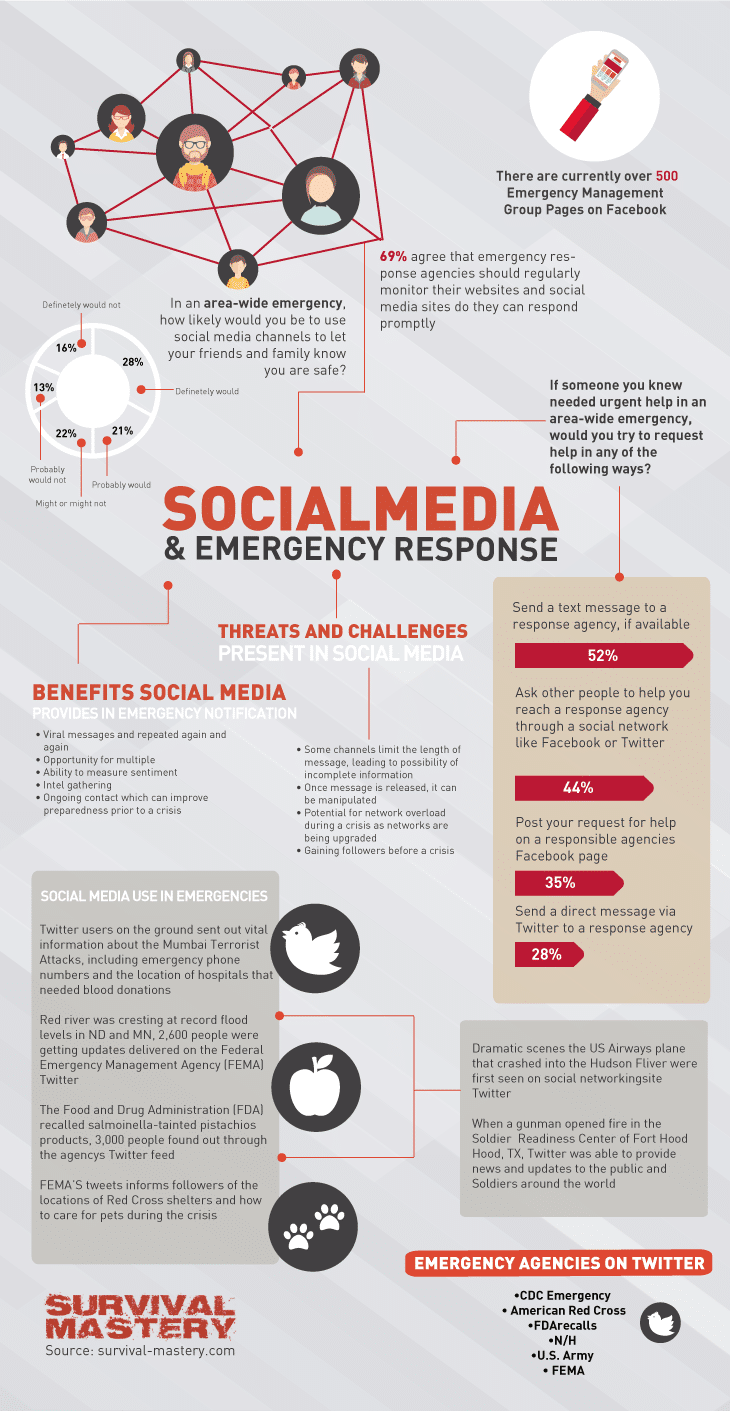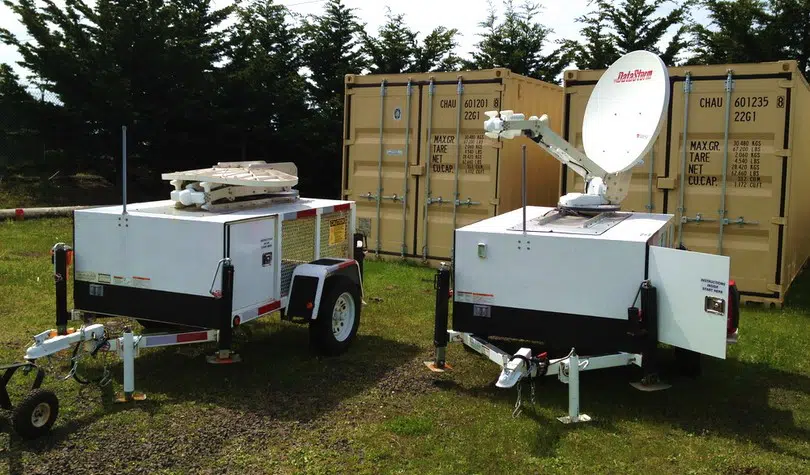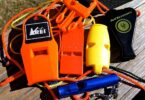If you ask a person who has been through a natural disaster, you will find out how difficult it is to establish communication immediately after. Usually power is down and landline communications are interrupted due to tower loss and other technical difficulties. Even though we live in an extremely technological era, an alternative communication system during disaster is an absolute necessity in such times. Rescue teams use these systems to get in touch with people who have been isolated and families get to find out about their loved ones.
[the_ad_placement id=”in-text-1-type-r”]Sometimes multiple disasters strike at the same time or at a short time difference like it happened in Virginia in 2011. People living here had to endure destructive tornadoes, the Tropical Storm Lee, Hurricane Irene and a 5.8 magnitude earthquake. It certainly seemed like God had a problem with that particular spot on Earth and people who were there know that in the minutes and days after everything calmed down it was very difficult to contact the authorities or to call their region emergency number.
We are used to be able to communicate at every given moment in time, with people who live thousands of miles away from our location which is why the need of an alternative communication system during disaster may seem obsolete and unnecessary. We often forget that our communication technology runs on power and it needs signal towers in order to reach the recipient device.

Communication is very important in our day-to-day life but it becomes crucial during and after a disaster. People need to let their loved ones know that they are safe and that all their family members are safe as well. Also, there are situations when family members get separated.
We all have to admit that earthquakes, storms, tornadoes, and all other natural disasters are frightening and extremely impressive. Mother Nature’s unleashed fury makes people panic and lose their calm and sometimes families get separated in a stampede. That’s why it is extremely important that everyone knows what to do in case this happens and how to get in touch as soon as they are safe.
How to communicate during a natural disaster?
Natural disaster preparation is very important and it has to be done in advance especially when it comes to communication. You need to prepare a communication system that will hold during disaster. For example, if you have Voice over IP (VoIP) that will definitely won’t work.
- Make sure you know what type of landline phone service you are using. The modern ones need power to work and if there is a power loss it, obviously, won’t work. Most phone companies gave up their copper wiring and that’s why you have to make sure that your phone will work even in extreme cases. You can contact your phone company and ask them what type of landline you have.
- If you have a battery operated phone or one that has a back-up system that works with batteries your problem is solved. If you don’t have one, ask your service provider if it can deliver one. Also make sure that the batteries are charged and keep a spare in the house for emergency cases. Check them periodically to make sure everything is in order. You wouldn’t want to find yourself in the middle of a hurricane, with a battery operated phone, and no usable batteries.
- Make sure your cellular phone is charged and an extra battery wouldn’t hurt. In case wireless connection still works after a natural disaster, you may need to use the phone many times.
- There are situations when the power goes off but secure Wi-Fi is still available so you can get online and read news about the disaster or send e-mails and chat with loved ones. That’s why it is important to charge your tablet and your laptop too. In case of need, you can recharge your phone battery from your laptop using an USB cable.
- A simple radio device can save lives. So if you have one, regardless of its power source (battery, solar or hand-cranked) you must keep it close. News agencies and radio channels broadcast during a natural disaster in order to keep people informed. This way you know if the danger is over or if you should continue to stay in the shelter. Also, you can find out news about missing persons and other emergencies. One great product is the Ambient Weather WR111-B because it has NOAA specific channels. If you want to check out more models like this one, take a look at our reviews on best emergency radios.
- If there is a natural disaster and you still get network and Internet, don’t occupy the line with voice calls unless you have an emergency. During times like this people need to call emergency services and lines become extremely crowded. If you have service and Internet send a text or an e-mail to your loved ones and leave the voice line free.
- Try to conserve your battery phone by activating a profile that is less consuming. Dim your screen brightness and don’t stay online unless you absolutely need to. You never know for how long the power is going to be down and you don’t want to end up with a dead phone in the middle of an emergency. You can actually turn your phone off if you don’t manage to get service and there are no bars. Seeking for signal is a pretty consuming activity for your battery’s phone.
- Make sure you’re not crowding the network. If you want to redial a number wait at least 10 seconds. Constant redialing in short periods of time may increase network congestion and this way no one gets to make a call.
- Don’t try to call the emergency line if you don’t have an emergency. Usually, in case of disaster, authorities create special lines for non-emergencies where you can call and find out information.
- If you have a landline at home that supports call forwarding you should consider forwarding calls to your smartphone. This way, even if you have to evacuate you can take on calls from your home.
- In case the power is down and your smartphone just died you can charge it from your car if you have a car charger.
As you can see, a communication system during disaster is extremely important and if you are lucky enough to have a working phone don’t waste it’s battery on activities that are not important like games and watching videos.
Other types of emergency communication systems
Mobile phones, landlines, tablets, and laptops represent our main way of communication these days. If you are lucky, these devices may help you get through a natural disaster, by offering you the possibility to stay in touch with friends and family or to get in touch with authorities and rescue teams.
See also: How to Choose The Best Emergency Whistle for Your Needs
Still, there are many situations when traditional and modern communications failed all together leaving isolated people at the mercy of chance. That’s why an alternative communication system is absolutely necessary in a shelter or a place where people gather waiting to pass the natural disaster safely. If you have one at home is even better but if not, you need to know where the closest one is in case you need to get in touch with rescue teams.
[the_ad_placement id=”in-text-2-type-r”]The best Emergency Communication System or ECS must have the following attributes:
- Time efficiency and speed – when a catastrophe takes place, people need to take immediate action. In order for this to happen they must be informed in time about emergencies and bad situations. That’s why a good ECS must be able to transmit clear information in a very fast manner;
- Affordability – people would never invest their money in an expensive ECS unless they want to join a rescue team (and maybe not even then). A good communication system must be affordable for the large public in order to be useful. In an emergency situation, it’s no help to know that there is a very good, high-tech ECS on the market when you don’t own one.
- Everyone can use it – let’s say that you made the investment and bought the latest ECS on the market but you didn’t have the time to read the manual. Now there are no instructions and you can’t figure it out how to use it. A good ECS must be intuitive and easy to use.
- Sender and receiver – When in an emergency situation, one needs not only to send out notifications but also to receive instructions via the ECS. We know that this may seem totally outdated, given the era we live in, but some early ECS only had the ability to send out emergency notifications.
Solution #1 – using radio waves
Radio waves are transmitted based on Earth’s ionosphere which makes them the perfect candidate when it comes to communicating during the worst scenarios of natural disasters. The only disadvantage might be the fact that most of them operate on power but they also have back-up systems using batteries or solar power.

There are three types of devices one can use to contact first responders:
- Short-wave radio which can be used to transmit messages to anyone who has the required equipment to receive. Given the fact that this is a long rage communication system via radio waves, it can be the device that saves many lives when there’s nothing else around.
- Weather radio is the device you want to have around during tornado or hurricane season. This device turns on automatically when there is an emergency broadcast letting everyone know there is a bad weather alert.
- Two-way radio operates on a several miles range and consists of two devices capable to send and receive messages. They are quite small and very easy to use which is why first responders prefer to have them in their kit. A list of such devices can be found in our detailed article about the best walkie talkie, with the best range.
These are the main radio equipment that can help you during a difficult time such as natural disasters. It’s better to have at least one of them even if you own mobile phone. In case your phone doesn’t work, a radio will definitely save the day.
Solution #2 – public devices
As you can imagine, there are two types of ECS according to their owner: public and private. The private ones are the ones we’ve already discussed: mobile phones, radio devices, tablets, laptops and so on. They are destined to be used by one single person.
Public devices are meant to warn as many people as possible at the same time using visual and/or audio signals. Thus, we have:
- Digital electronic sign on LEDs you find on public advertisement panels, subway notification panels, and so on;
- Electronic signage using LCD TVs and monitors in public spaces like hospitals, bars, coffee shops, stores, and so on;
- Giant voice systems that are usually on public buildings used to announce people in the close vicinity to take cover.
Another public alternative communication system during disaster is the media (television, newspapers, online publications, and radio broadcasting) but if you want to alert the population about an immediate danger, the systems enumerated above are more effective.
Solution #3 – satellite communication system
Catastrophic events such as hurricanes, earthquakes, floods and/or fire are usually followed by general madness and the lack of a working communication system makes things even worse.
So, when landlines and power are down and no modern or traditional system is working satellites are fine and continue their safe journey in orbiting the planet. This allows rescue teams and emergency responders to meet immediate communication needs, using satellites and satellite systems. This type of communication is used mostly by humanitarian organizations and first responders who are usually present at big, catastrophic events like Haiti.

There are a few examples that prove how fragile a terrestrial communication structure is. Communication towers usually get destroyed during these kinds of situations leaving people in the dark without any possibility of contacting the authorities and asking for help. This is what happened when:
- Hurricane Katrina hit New Orleans;
- A devastating earthquake hit Pakistan;
- Japan was also hit by a powerful earthquake in 2011.
After these events and many like these, the importance of a wireless communication system that is not based on a terrestrial structure increased for local governments and authorities. This is where satellite communication entered the scene. They present a series of advantages towards terrestrial communication but the most important advantage is the fact that they work while floating around our planet where no wind, water or fire can reach them.
There are two main types of satellite communication that someone could use in case of emergency: Geostationary Satellite Systems (GEO) and Low Earth Orbit Satellites (LEO).
GEO support a full range of communication services like voice, broadband data and video and they are located at 36.000 km above our planet. They sit in a fixed position and usually are owned by a country or an organization responding to special (fixed or mobile) equipment located on Earth (antennas and mobile terminals). They are not just an alternative communication system during disaster they are also very useful at warning people about seismic activity that could transform in a catastrophic situation and floods.
Also, governments can broadcast warnings and keep the general flow of information during difficult times. At this moment, there are about 300 commercial GEOs floating above our heads, outside the terrestrial atmosphere.
LEOs are (as the name specifies) situated on the low orbits between 780 and 1500 km and they are used to deliver low speed data and voice. They are easier to contact using a mobile unit, the size of a cellular phone. The fact that terrestrial units are so easy to carry allows rescue team to use these satellites in any situation.
[the_ad_placement id=”in-text-3-type-r”]Satellite communication in case of natural disasters only works if local authorities, humanitarian organizations and first responders prepare in advance. They need to know the area and what type of satellite units they are going to need. There are four main types:
- Handheld – phone satellites that work using a mobile satellite provider. This type of device is affordable and very intuitive to use. Also they respect the first condition of a good ECS, they can send and receive messages at incredible speed.
- Terminals for communications on the move – a slightly bigger equipment that is usually operated from inside a car (you’ll need one to transport it). This type of device is required for extra high speed communications that require broadband data and video communication.
- Fixed satellite communications – big equipment that are best to be installed before the disaster strikes, in an area near the endangered zone. These devices are required for a longer period of time and they support all kinds of applications (pre-disaster analysis and environmental scanning) and data sent and received at tremendous speeds.
- Portable devices equipped with GPS technology – while it won’t give you the possibility to get in touch with the authorities, it will give you your precise location and make it easier for you to reach areas where you know you may get help.
Our friends from My Outdoors Life did create a great list of best satellite phones – check it out here.
Are you really prepared?
As you can see, according to the type of communication required there are some preparations that have to be done in advance, like:
- choosing the satellite provider and applying for a submission;
- selecting the necessary bandwidth;
- selecting the type of device you will need;
- installing the device and selecting the team that will work with them.
Like everything else, when it comes to a natural disaster, finding the right alternative communication system requires preparation in advance. Every person must be aware of the fact that disasters are called this way because they tend to flatten everything down in their way starting with houses, cars, trees and ending up with communication towers. If this happens you can’t rely on traditional systems to alert authorities and rescue teams – you must have an alternative.
Check out our informative article tackling emergency communications plans to get you prepared for anything.






Additionally, it helps if you know morse code and flag signals as these two do not rely on electric signals to transmit communications. It can take time to learn but it does help knowing how to use them, especially once SHTF.
That is a good idea Jason, thank you for mentioning these.
Lovely article, I never thought about this. Radios that rely on batteries are not worth using without reliable batteries. Is there a kind of a solar battery charger that could get one through tough times?
Anker PowerPort Solar Lite should work just fine.
Most people are more familiar with using a radio (compared with the other methods described in the article). However, what should be done in places like Norway where you can not get sunlight for solar batteries? Is there a good and easy way to communicate in such situation?
In a situation like a natural disaster, try to remain calm and save your sources of communication. I mean, if you have a cell phone, activate power saver mode so that your battery could last longer and do not panic. Also, try not to call helplines as they are overburdened (unless you have an emergency).
Thank you for showing interest in our community.
You can use power banks.
Another on point article that is full of great and useful information. As an Amateur HAM Radio operator that lived in Bosnia during the war in 90’s I can testified tot he value of Radio Communication in situation when conventional mod of communications are not available or reliable. I would highly recommend to all of your readers that are willing to spend one weekend of learning and taking the test to go for a Ham radio license, Mo make it easier to become and HAM radio amateur, FCC has remove Morse Cod requirement from the Basic level.
KI6AYG
Once again, Djani, thanks for your insightful contribution. Most preppers wonder why they need a license. The idea is that you need to practice now before things take the wrong turn. Moreover, it is easier to get the license, so why don’t you just grab it now.
You need an alternative communication system during disasters and emergencies. However, there are some factors that can help you to be prepared, such as choosing the satellite provider, selecting the provider and type of device suitable for you, and installing the device. Some of the satellite devices that can help you are handheld satellite communications, fixed satellite communications, etc. What other alternative preparations are you making for communications and survival during natural disasters?
Communication is definitely important during and after a disaster. Therefore, it is wise to have alternative communication system, just in case the usual one fails to operate at your hour of need.
Everyone should know this informative article. You might ask why, but simply because it has been observed for years that people involved in crisis depended too much on using radio waves; though, it has proven its effectivity through time, we all know that modern technology has introduced to us new mediums of communication. Thus, it should be utilized, especially in different calamities.
Unlike before, nowadays you have multiple emergency communication systems at your disposal apart from radio waves, including satellite communication, and public devices. The choice depends entirely on your budget and preference.